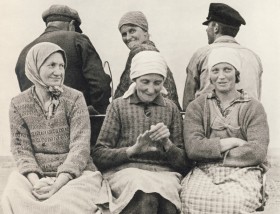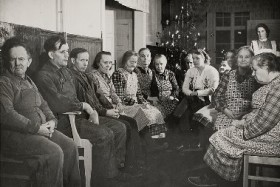


Sune Jonsson: Nine reflections /3
… One thereby denies that photographs can represent a pictorial manifestation of experiences and personal views, that photographs can be personal messages having aesthetic qualities of communication. (Sune Jonsson)
NINE REFLECTIONS CONCERNING 1/125th
By Sune Jonsson (1978)
3
In the 40s and early 50s, when Walt Disney was at the peak of his documentary-film activity, he is said to have remarked that it was better to give training in cinematography to the scientists working in the subject areas of those documentaries than vice versa. He wanted thereby to emphasize how vital expertise is in all depictions of reality. Such an attitude implies, however, that the photographer is exclusively regarded as a triggerer of the camera shutter’s 1/125th, as no better than the lens’ own capability. One thereby denies that photographs can represent a pictorial manifestation of experiences and personal views, that photographs can be personal messages having esthetic qualities of communication.
The enthusiasm that surrounded the documentary image in the 50s and 60s now seems to be metamorphosing into scepticism, despite the fact that the words “document” and “documentation” have never been so popular as they are now – but also never before employed in so confused a manner. As a result of the widespread epigonery, and because the photographers’ own standards for their photography are far too low, that photography is now being met with ennui. Some 10 years ago, Rune Hassner, in a notorious article was already speaking about “unpleasantly grimy and vaguely socially critical so-called documentary photography”. So, even then, it was already obvious how fuzzy the photographic nomenclature had become, what a confusion of concepts prevailed. It had also become apparent that the penetrating investigation and the comprehensive pictorial description founded on extraordinary expertise and clearly formulated in its purpose (Gunnar Lundh’s Statarna i bild, Sven Järlås’ Ålderdom) had begun to give way to photographic stereotypes, a sort of esthetic formula-language that is more an expression of conventions of visual depiction than of depicted knowledge, personal luminosity, and documentary conception.


Perhaps one can already speak of a manifest reaction against these photographic stereotypes, a sort of total ruthlessness toward the photographic medium resulting in the individual picture’s virtually becoming unpretty and without content. But, taken together with all the other pictures in the project, it subordinates itself to a documentary intent and is transformed into one detail in a visionary and utterly subjectve method. With such photographers as Denmark’s Jacob Holdt (Amerikanske Billeder. En personlig rejse gennem det sorte Amerika, 1977) and Morten Bo (Lyset slukkes kl. 22.00. En fotografisk rapport fra tvangsanstalter og nødhjem), or Sweden’s Christer Strömholm (Poste restante, 1967), Cartier-Bresson’s method – the individual picture’s synthetic 1/125th and the esthetically utilized 35 mm frame – has untergone a transition into its antithesis. (To be continued on Filmkommentaren with six more reflections…)
PHOTOS
Sune Jonsson: Småbrukaren Helmer Jonson, Baggård, Nordmaling. Tilsammans med sin hustru Berta en sommerdag 1960 vid köksbordet efter morgonmjölkningen. Sune Jonsson skriver i billedteksten i sin bog Album – fotografier fem decennier, 2000, hvorfra billedet er hentet: ”… Helmer Jonsson var kusin till min far. Under uppväkståren brukade vi cykla de två och en halv milen från Nyåker för att besöka Helmers och för at fiska i Sunnansj¨n vid Baggård. När jag kom tillbaka till dem 1959 kände jag att deras miljö och livsform var på väg in i historien. Och greps av ambitionen att skildra det som då fanns kvar, allt som jag mindes från barnsben av deras arbete och liv, kände ett sorts ansvar för släktskabets skull. Mit dokumentära intresse vaknade helt ekelt på allvar.”
Gunnar Lundh, fra bogen Statarna i bild.
Sven Järlås, fra bogen Ålderdom.
http://www.filmkommentaren.dk/blog/blogpost/3598/